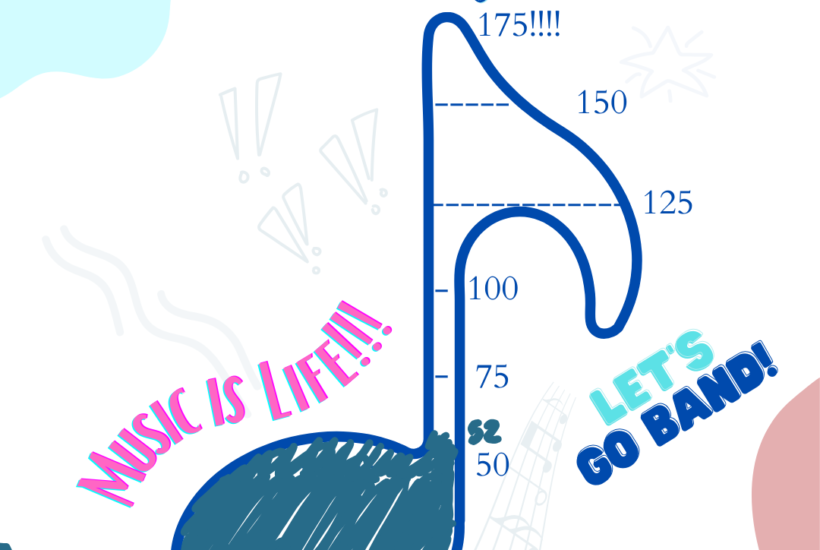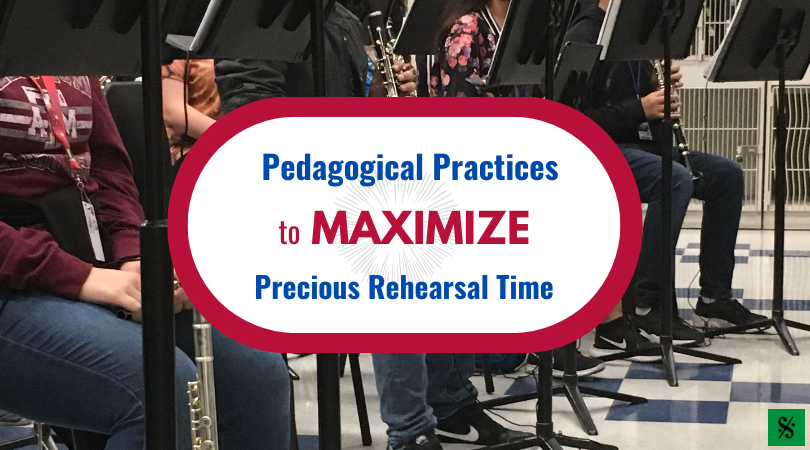A Fundamental Approach to Teaching Individual Listening & Playing Responsibilities
Developing strong ensemble skills must start during the beginner year by developing independent musicians through counting skills, aural skills, and technique. Creating traditions, systems, skill sets, a culture of sectionals, a private lesson program, and acquiring knowledge is the basis for student led instruction. There are no shortcuts to success; it still takes the same time to learn to play a wind instrument today as it did a century ago. The technology that we enjoy is simply a tool, but it is the master teacher who brings the learning to life.
Classroom management
Students learn more effectively if they are active participants in the process. No one gets to sit and wait until the director tells them what they are doing wrong and then how to correct it; rather, students must lead the instruction. Making students a partner in the process gives them ownership and a seat at the table, so to speak. Instead of telling your students what they are doing incorrectly and how to fix it, ask them if they can hear a problem (analysis), if they know what the problem is (diagnosis), and what skills do they have to fix the problem (solution). Being Socratic in your questioning will stimulate critical thinking and listening in your students and will create an environment of independent thinking. Allow students to evaluate one another in a safe and constructive format to encourage critical listening skills.
Tonal Concepts first
The basis for all wind instrument tone quality is air. Develop a system for teaching your students how to breathe and use their breath effectively; time spent on breathing exercises is never wasted. Teaching embouchure will be more customized to the student—not everyone will have the same results because of differences in facial musculature, lip size and shape, and maxillofacial structure. Customize your teaching to the individual student and don’t overlook articulation, good posture, and proper hand position.
As the expert, you must have a clear understanding of how to teach students to produce a characteristic sound for each instrument in your band. As the director, you need to be able to diagnose both visually and aurally and have solutions ready for problems that might occur. You should know the common tuning tendencies for each instrument, how to respond to them, and should teach your students about them so they can independently respond. Continue to develop impeccable listening skills regarding intonation, tone color, blend, balance, articulation execution, etc. Understand that you will teach the same concepts in beginner classes as you do in high school classes, they are simply presented at different levels. And most importantly, you need to pass these skills on to your student musicians to help them develop independence, allowing everyone to engage in more meaningful musical collaboration.
levels of listening
Students should be able to identify and perform at least 4 levels of listening:
- Self
- Section
- Color group
- Ensemble
In level 1, students should be listening to themselves for characteristic sound, playing in the most resonant part of the sound, and intonation. In a homogeneous beginner band setting, this is easily done since there is usually only one ‘instrument’ in the class. The key is to teach the students to actively listen to their own sounds, assess the quality and intensity of the sound, and make a judgment on the general intonation of their own sounds and those of others in the class. Students should play with good tonal energy without over-playing their instruments and without playing out of tune to hear themselves. This level of listening should be a focus from the moment students begin producing sounds on the head joint, mouthpiece & barrel, mouthpiece & neck, mouthpiece, and lead pipe, etc.
In a full band setting, this listening level can be more challenging since everyone is usually playing at the same time. Utilizing the “F Around the Room” exercise to facilitate this listening level will help students sort through all the sounds they are hearing in the ensemble to eventually be able to isolate their own sounds from everyone else’s. Anytime students are playing, they should be aware of this level first before going on to the other levels.
In level 2, students should be blending in with the other players within their section and matching tonal energy, essentially camouflaging their sound within the section. This level is usually taught when students are consistently producing characteristic sounds on the instrument (this can be the ‘small’ instrument or full instrument) and are playing with good tonal energy. This is where we begin to use terms like bright or dark regarding tone rather than playing louder or softer to fit into the section of sound. We want students to be able to play with a blended sound at any volume, so we don’t necessarily want them playing softer to try to blend in with their section. Changing the ‘color’ of the sound rather than the volume of the sound is what we are listening for in most cases; this is where we might speak of ‘voicing’ the sound.
At this point in listening level 2, we want to go beyond blending unisons to teaching students how to blend octaves. This is sometimes one of the most difficult things for students to understand and achieve. My rule is for the upper octave to ‘color’ the sound of the lower octave. In other words, the lower octave must produce a sound with enough tonal energy to give the upper octave something to fit into. In a full band setting, almost everything we do in our warm-ups are in unison and octaves, so the students should always be playing with levels 1 & 2 in mind. The director should be holding students accountable for this during the warm-up and not thinking of the listening levels as a separate exercise, but one that is present throughout the rehearsal.
In level 3, students should be blending in with their color group(s). A color group is a group of different instruments that generally play the same parts in a piece of music. Color groups can change between and within compositions. When working on listening level 3, use the basic groups and then, as the students become better at this level, change up color groups to create new sounds and make things a little more challenging for the students. The basic color groups are just soprano, alto, tenor, and bass groups; for example, flute, oboe, clarinet, and trumpet are in the soprano color group. Alto sax and horn are in the alto color group. Tenor sax, trombone, bassoon, and euphonium are in the tenor group and bari sax, bass clarinet, and tuba are in the bass color group. In general, marches are set up in color groups and are great compositions to use for practicing listening levels. As a rule, woodwinds within a woodwind/brass color group should always color the brass.
In a beginner class setting, this level is more difficult to practice unless you have multiple classes scheduled during a class period. If this is the case, try to be forward thinking when you set up these classes so that you have like color group instruments during the same class period. If you do this, when it is time to begin putting together a beginner performance, you can combine classes within a given class period to work on level 3 listening and prepare them for listening level 4 when the entire band rehearses together.
In level 4, students should be able to balance in the ensemble from the lowest sounding melodic instrument. Prioritize musical lines within a composition and use this to balance the ensemble. At any given moment in a composition students should be able to identify or know these things:
- Which color group has the melody?
- What is the function of my color group?
- Who else is in my color group?
Knowing these 3 things will guide the students in determining where they fit into the overall structure of the music and will help to develop their ‘ensemble ears’.
The goal is to develop independent musicians who can make sound musical judgments on the fly. There is not much a conductor can do from the podium during a performance if something goes amiss; it is up to the musicians to pull together using the tools you have instilled in them. If you are doing this, your students will get more enrichment from the musical experience and end up becoming a partner in the process rather than feeling overwhelmed and defeated. Students will begin to make their own musical decisions rather than waiting for you to tell them what to do or how to do it. Literature is a great way to inspire young musicians and to apply the skills that you are developing, but not so if the literature is far beyond their capabilities. Choose your music wisely, and remember that the goal is to facilitate excellence and the desire for excellence.
Kathy Johnson, Adjunct Professor of Woodwind and Brass Techniques at the University of North Texas, has led a distinguished career of 40 years teaching music education in Texas. Highly respected clinician, adjudicator, and conductor, Mrs. Johnson serves as Artistic Director of the Dallas Winds Honor Band and is the UIL Region 2 Executive Secretary. Dedicated to music education and developing the individual young musician, Mrs. Johnson co-authors Musical Mastery for Band and the forthcoming Student Teachers Workbook.
Under Kathy’s direction, her bands have been selected as: TMEA honor band, performers for the Texas Music Educators Conference and the Midwest International Band & Orchestra Clinic, UIL State Marching Band Champions, Outstanding Band Program by the Texas Chapter of the American School Band Director’s Association, and an Exemplary HS Band Program by the TBA. This summer, she will receive the Meritorious Achievement Award presented by the Texas Bandmasters Association. Mrs. Johnson resides in Flower Mound, TX, with her husband, Eric.




Leave a Reply
You must be logged in to post a comment.